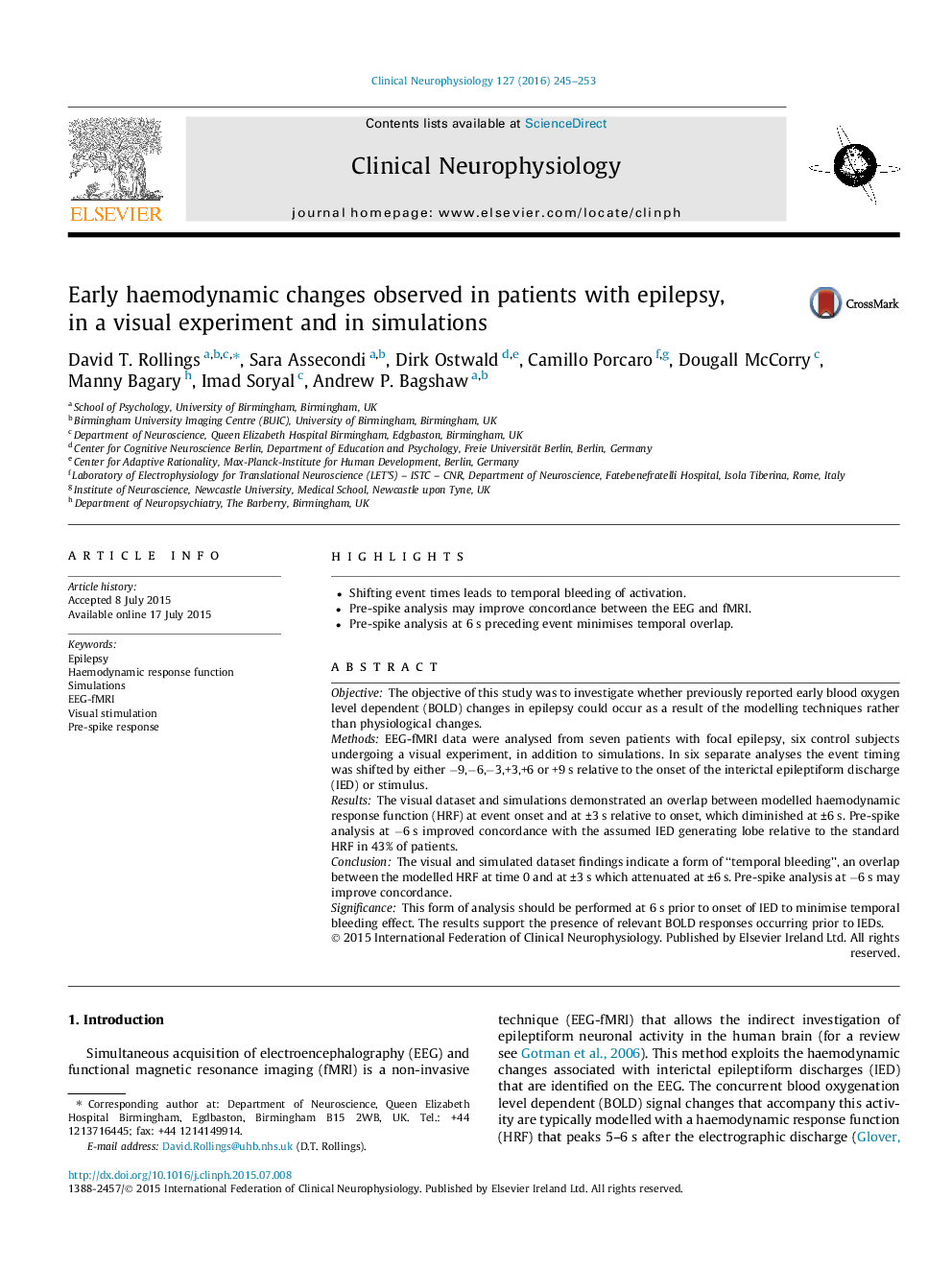| کد مقاله | کد نشریه | سال انتشار | مقاله انگلیسی | نسخه تمام متن |
|---|---|---|---|---|
| 6007867 | 1184960 | 2016 | 9 صفحه PDF | دانلود رایگان |

- Shifting event times leads to temporal bleeding of activation.
- Pre-spike analysis may improve concordance between the EEG and fMRI.
- Pre-spike analysis at 6Â s preceding event minimises temporal overlap.
ObjectiveThe objective of this study was to investigate whether previously reported early blood oxygen level dependent (BOLD) changes in epilepsy could occur as a result of the modelling techniques rather than physiological changes.MethodsEEG-fMRI data were analysed from seven patients with focal epilepsy, six control subjects undergoing a visual experiment, in addition to simulations. In six separate analyses the event timing was shifted by either â9,â6,â3,+3,+6 or +9 s relative to the onset of the interictal epileptiform discharge (IED) or stimulus.ResultsThe visual dataset and simulations demonstrated an overlap between modelled haemodynamic response function (HRF) at event onset and at ±3 s relative to onset, which diminished at ±6 s. Pre-spike analysis at â6 s improved concordance with the assumed IED generating lobe relative to the standard HRF in 43% of patients.ConclusionThe visual and simulated dataset findings indicate a form of “temporal bleeding”, an overlap between the modelled HRF at time 0 and at ±3 s which attenuated at ±6 s. Pre-spike analysis at â6 s may improve concordance.SignificanceThis form of analysis should be performed at 6 s prior to onset of IED to minimise temporal bleeding effect. The results support the presence of relevant BOLD responses occurring prior to IEDs.
Journal: Clinical Neurophysiology - Volume 127, Issue 1, January 2016, Pages 245-253